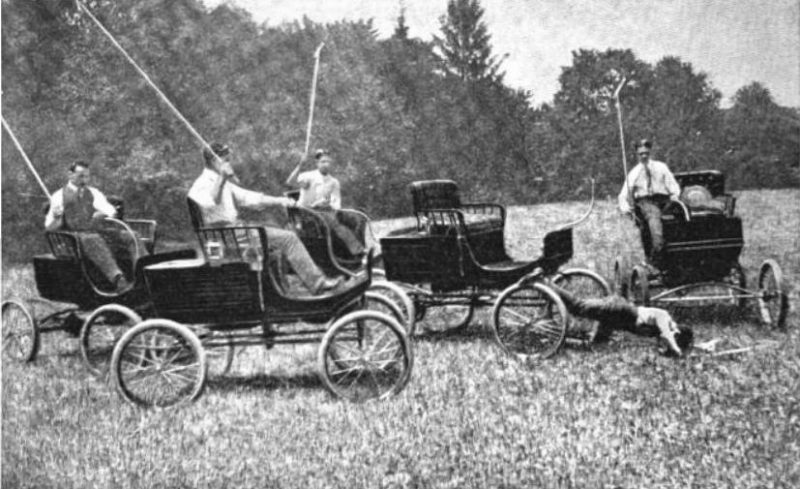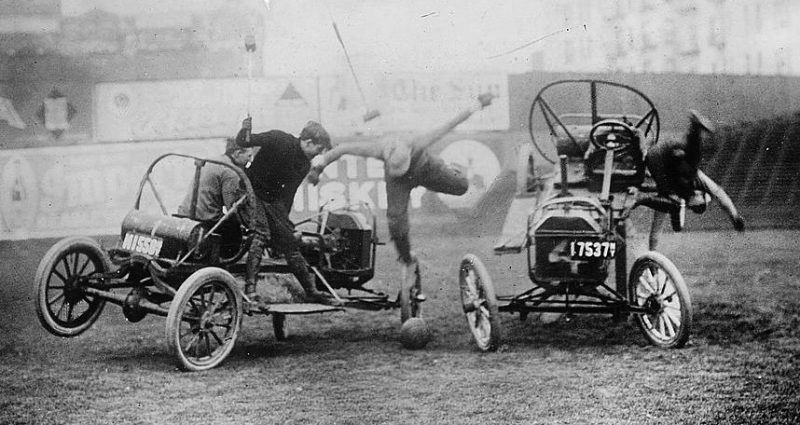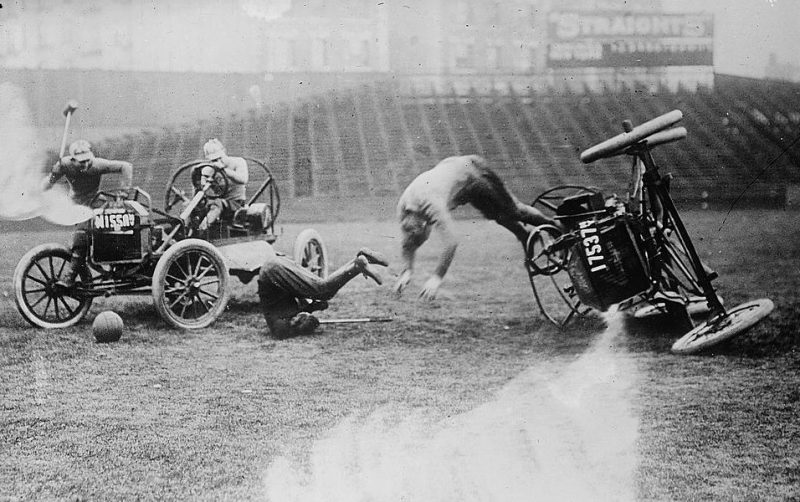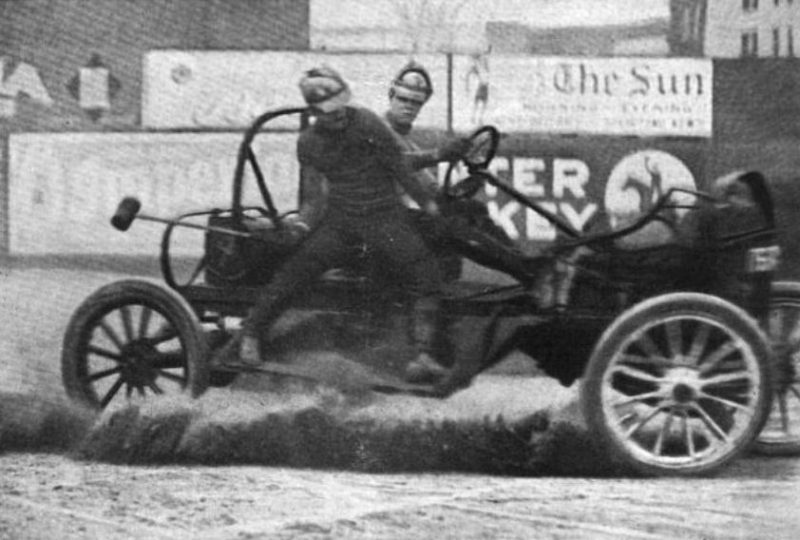Automobile polo or Auto polo was a motorsport invented in the United States with rules and equipment similar to equestrian polo but using automobiles instead of horses. The sport was popular at fairs, exhibitions and sports venues across the United States and several areas in Europe from 1911 until the late 1920s; but it was dangerous and carried the risk of injury and death to the participants and spectators.
A degree of credit must go to Joshua Crane, Jr. of the Dedham Polo Club in Boston. Crane first proved the viability of the sport in 1902 by demonstrating his skill wielding a polo mallet and steering a car simultaneously.

But it would be another decade before auto-polo truly entered the public sphere. The official inventor of auto polo is purported to be Ralph “Pappy” Hankinson, a Ford automobile dealer from Topeka who devised the sport as a publicity stunt in 1911 to sell Model T cars. No car but the Model T Ford had the forward speeds and reverse and brake applied by foot pedals, plus throttle operated by hand, and the transmission system that made such maneuvers possible.
The reported “first” game of auto polo occurred July 20, 1912, when a Ford dealer from Kansas held an auto-polo match in an alfalfa field in Wichita as a stunt to drum up business, using four cars and eight players. Witnessed by 5,000 people, the match pitted the “Gray Ghosts” against the “Red Devils.”

The contest featured two cars per team, with one man driving each car and another man hanging off the running boards with a mallet, swinging at a basketball-sized sphere. As the driver whipped his car back and forth, stopped and twisted and turned, his mallet man, standing on a step at the car’s right side, leaned and turned to hit the ball or to take it from his opponent. To block a drive by the other team, he used arms, legs, all his body. And at game’s end, he usually was bruised and often was bloody. That’s why a surgeon stood by to attend injured players.
“It combines all the dangers and excitement of a bullfight, a football game and a ride in an aeroplane,“ Technical World Magazine, March 1913.

Playing time was 60 minutes. Quarters and halves, with rest periods between halves, were as in football. The teams changed goals at the half. The sport grew in popularity in following years, with matches held regularly in New York, Chicago and other cities around the U.S. Auto polo was also first played in New York City inside a regimental armory building in 1908 or 1909. The popularity of the sport increased after its debut in July 1912, with multiple auto polo leagues founded across the country under the guidance of the Auto Polo Association.

The first large-scale exhibition of auto polo in the eastern United States was held on November 22, 1912 at League Stadium in Washington, D.C. By the 1920s, New York City and Chicago were the principal cities for auto polo in the United States with auto polo matches occurring every night of the week. In New York, matches were held at Madison Square Garden and Coney Island.
Internationally, auto polo was regarded with skepticism and caution and in 1912, the British motoring publication The Auto described the new sport as “very impressive” and a “lunatic game.”

Most of the cars would usually be severely wrecked or demolished by the time the match was finished, leaving most players uninsurable for costly material and bodily damages incurred during the game. A tally of the damages encountered by Hankinson’s British and American auto polo teams in 1924 revealed 1564 broken wheels, 538 burst tires, 66 broken axles, 10 cracked engines and six cars completely destroyed during the course of the year. The sport waned in popularity during the late 1920s, mostly due to the high cost of replacing vehicles, but did have a brief resurgence in the Midwestern United States after World War II.